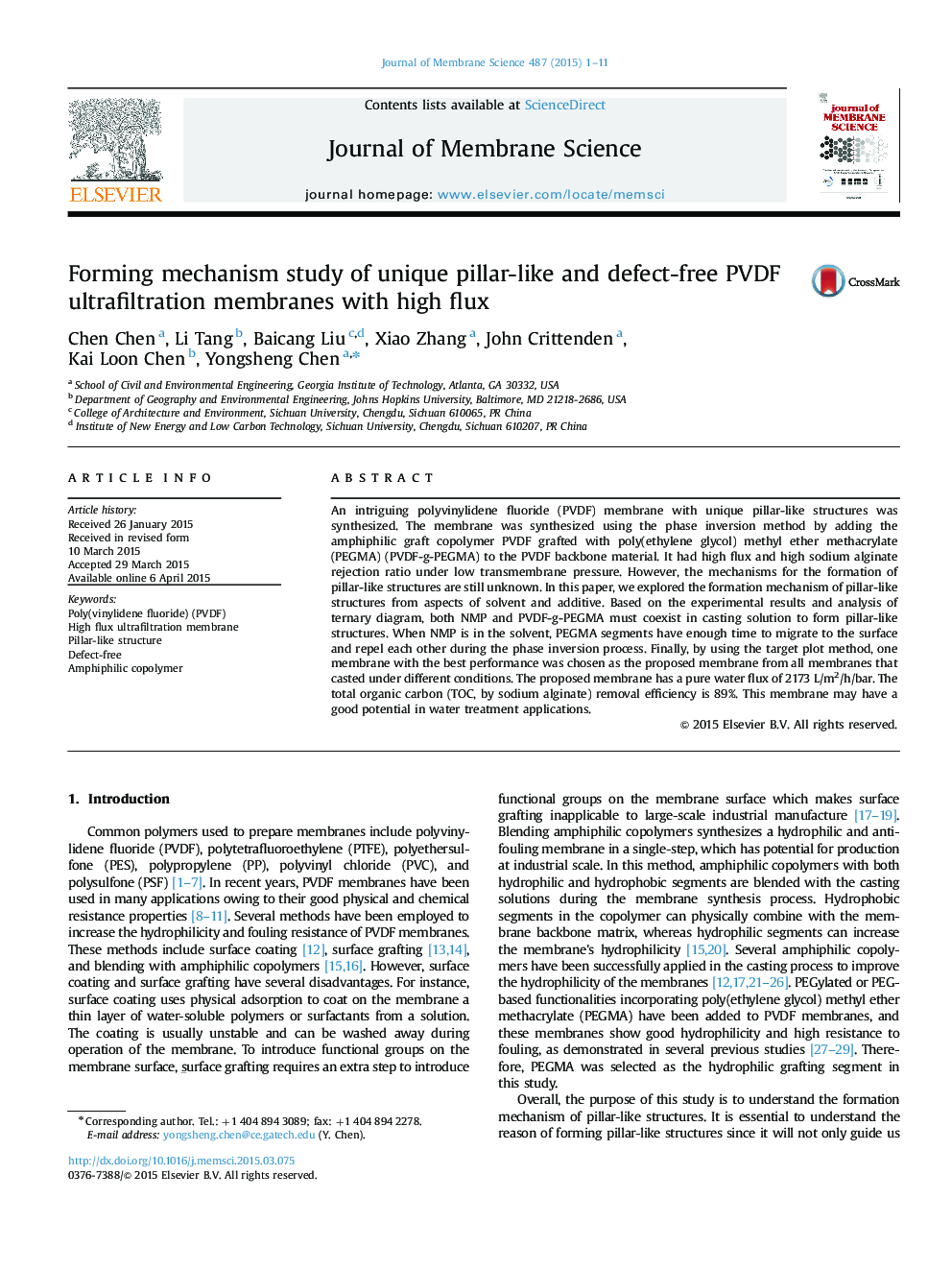| Article ID | Journal | Published Year | Pages | File Type |
|---|---|---|---|---|
| 7021290 | Journal of Membrane Science | 2015 | 11 Pages |
Abstract
An intriguing polyvinylidene fluoride (PVDF) membrane with unique pillar-like structures was synthesized. The membrane was synthesized using the phase inversion method by adding the amphiphilic graft copolymer PVDF grafted with poly(ethylene glycol) methyl ether methacrylate (PEGMA) (PVDF-g-PEGMA) to the PVDF backbone material. It had high flux and high sodium alginate rejection ratio under low transmembrane pressure. However, the mechanisms for the formation of pillar-like structures are still unknown. In this paper, we explored the formation mechanism of pillar-like structures from aspects of solvent and additive. Based on the experimental results and analysis of ternary diagram, both NMP and PVDF-g-PEGMA must coexist in casting solution to form pillar-like structures. When NMP is in the solvent, PEGMA segments have enough time to migrate to the surface and repel each other during the phase inversion process. Finally, by using the target plot method, one membrane with the best performance was chosen as the proposed membrane from all membranes that casted under different conditions. The proposed membrane has a pure water flux of 2173Â L/m2/h/bar. The total organic carbon (TOC, by sodium alginate) removal efficiency is 89%. This membrane may have a good potential in water treatment applications.
Related Topics
Physical Sciences and Engineering
Chemical Engineering
Filtration and Separation
Authors
Chen Chen, Li Tang, Baicang Liu, Xiao Zhang, John Crittenden, Kai Loon Chen, Yongsheng Chen,
